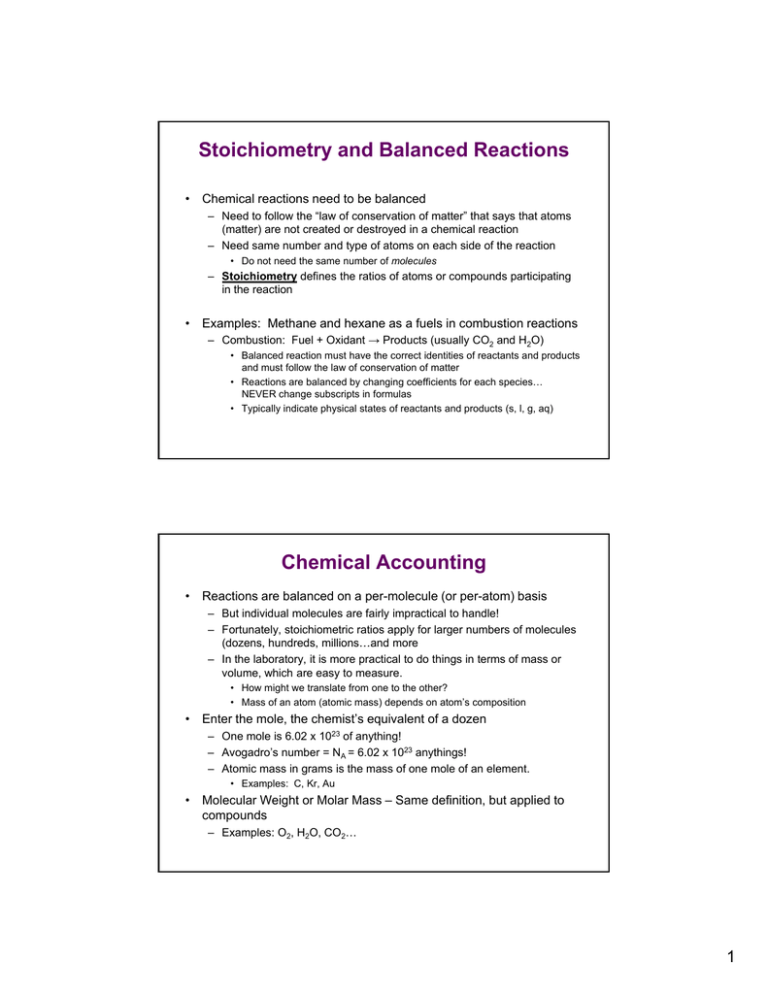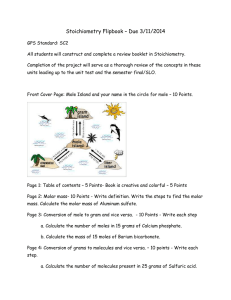Stoichiometry and Balanced Reactions • Chemical reactions need to be balanced
advertisement

Stoichiometry and Balanced Reactions • Chemical reactions need to be balanced – Need to follow the “law of conservation of matter” that says that atoms ((matter)) are not created or destroyed y in a chemical reaction – Need same number and type of atoms on each side of the reaction • Do not need the same number of molecules – Stoichiometry defines the ratios of atoms or compounds participating in the reaction • Examples: Methane and hexane as a fuels in combustion reactions – Combustion: Fuel + Oxidant → Products (usually CO2 and H2O) • Balanced reaction must have the correct identities of reactants and products and must follow the law of conservation of matter • Reactions are balanced by changing coefficients for each species… NEVER change subscripts in formulas • Typically indicate physical states of reactants and products (s, l, g, aq) Chemical Accounting • Reactions are balanced on a per-molecule (or per-atom) basis – But individual molecules are fairly impractical to handle! – Fortunately, stoichiometric ratios apply for larger numbers of molecules (dozens, hundreds, millions…and more – In the laboratory, it is more practical to do things in terms of mass or volume, which are easy to measure. • How might we translate from one to the other? • Mass of an atom (atomic mass) depends on atom’s composition • Enter the mole, the chemist’s equivalent of a dozen – One mole is 6.02 x 1023 of anything! – Avogadro’s number = NA = 6.02 x 1023 anythings! – Atomic mass in grams is the mass of one mole of an element. • Examples: C, Kr, Au • Molecular Weight or Molar Mass – Same definition, but applied to compounds – Examples: O2, H2O, CO2… 1 The Mole and Chemical Reactions • Remember, reactions occur on a mole-to-mole basis – Coefficients tell us about this dependence – Use atomic and molar masses to get to grams The Mole and Chemical Reactions • Molar masses let us answer questions like: – “How many grams of carbon dioxide will be released if I completely combust 10.0 g grams of methane? – How many grams of carbon are present in 100.0 grams of caffeine? • General Process: 1. 2. 3. 4. Write and balance the chemical equation for the process. Determine molar masses of substances involved in the calculation. Use the coefficients of the balanced equation to convert the moles of the given substance to the moles of the desired substance. Use the molar mass to convert the moles of the desired substance to grams of the desired substance. 2



